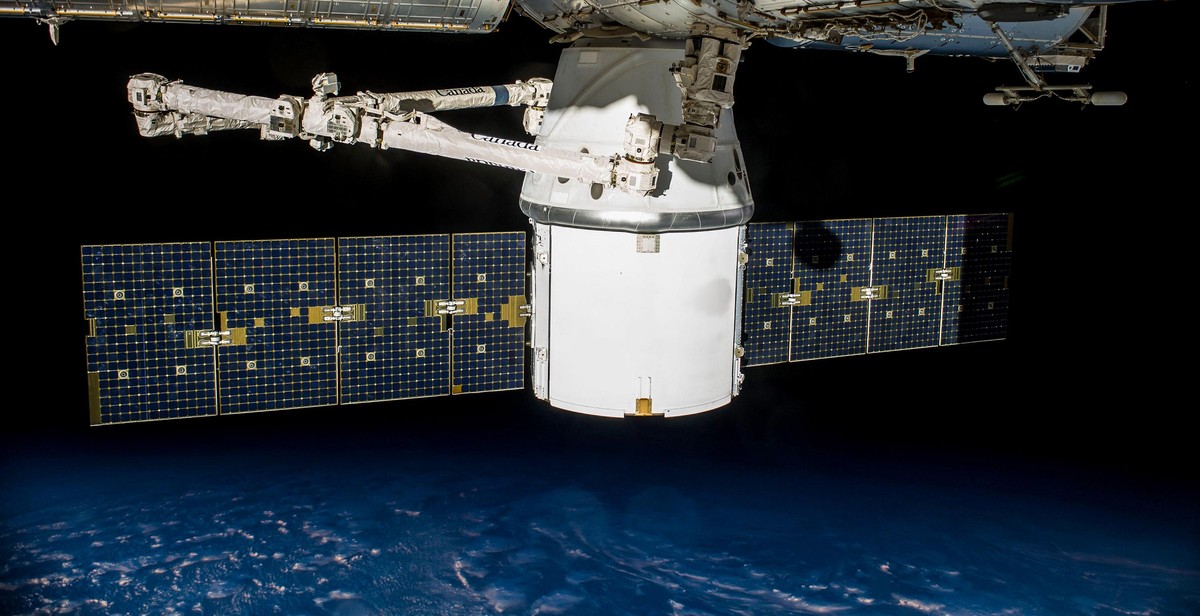Introduction
SpaceX, founded by entrepreneur Elon Musk in 2002, has emerged as a pioneering force in the field of space exploration and travel. With its ambitious goals of revolutionizing space technology and making life multiplanetary, SpaceX has made significant contributions to the advancement of space travel.
SpaceX’s primary objective is to reduce the cost of space travel and make it accessible to a broader audience. Through innovative engineering and cutting-edge technology, the company has achieved remarkable feats, such as the development of reusable rockets. This breakthrough has drastically reduced the expenses associated with space missions, opening up new possibilities for scientific research, commercial ventures, and even space tourism.
Another key aspect of SpaceX’s mission is the colonization of Mars. The company’s Starship spacecraft, currently under development, aims to transport humans and cargo to the Red Planet. By developing sustainable technologies for long-duration space travel and colonization, SpaceX is laying the foundation for future human exploration of Mars and beyond.
Furthermore, SpaceX has played a significant role in fostering collaboration within the space industry. Through partnerships with NASA and other international space agencies, SpaceX has demonstrated the potential for public-private cooperation in advancing space exploration. This collaboration has not only accelerated technological advancements but has also created new opportunities for scientific discovery and space missions.
This article explores the pivotal role that SpaceX has played in the advancement of space travel, highlighting its achievements, innovations, and the impact it has had on the future of space exploration.
The History of SpaceX
Foundation and Early Years
Space Exploration Technologies Corp., better known as SpaceX, is an American aerospace manufacturer and space transportation company. Founded in 2002 by entrepreneur Elon Musk, SpaceX was established with the ambitious goal of revolutionizing space technology and making life multiplanetary.
The First Successful Launch
After several years of research and development, SpaceX achieved its first major milestone on September 28, 2008, with the successful launch of the Falcon 1, becoming the first privately-funded liquid-fueled rocket to reach orbit. This breakthrough not only marked a significant moment for SpaceX but also for the commercial space industry as a whole. It demonstrated that private companies could compete with government agencies in space exploration.
Milestones and Achievements
Since its early success, SpaceX has continued to push boundaries and achieve remarkable milestones. In 2010, the company became the first privately-funded company to send a spacecraft, the Dragon, into orbit and successfully recover it. This achievement paved the way for future missions to the International Space Station (ISS) and marked the beginning of a long-term partnership with NASA.
In 2012, SpaceX made history once again by becoming the first privately-funded company to dock a spacecraft, the Dragon, with the ISS. This marked a significant step towards the goal of commercial space travel and the eventual colonization of other planets.
Over the years, SpaceX has developed and successfully launched various rockets, including the Falcon 9 and Falcon Heavy, which have become industry workhorses for delivering payloads to space. Additionally, the company has made significant progress in reusable rocket technology, with multiple successful landings and recoveries.
With ongoing projects such as the development of the Starship spacecraft and the ambitious goal of establishing a human settlement on Mars, SpaceX continues to push the boundaries of space exploration and inspire a new era of space travel.

Innovations in Rocket Technology
SpaceX has revolutionized rocket technology through a series of groundbreaking innovations, leading the way in the advancement of space travel. Their achievements include:
Reusable Rockets
SpaceX’s introduction of reusable rockets has significantly reduced the cost of space exploration. Traditionally, rockets were discarded after each launch, resulting in exorbitant expenses. However, SpaceX’s Falcon 9 rocket is designed to return to Earth and land vertically after delivering its payload to orbit. This breakthrough technology enables the rocket to be refurbished and reused, dramatically cutting down on the overall costs of space missions.
Falcon Heavy: The World’s Most Powerful Rocket
The Falcon Heavy is a game-changer in the field of rocketry. With a lift capacity of over 64 metric tons, it has become the most powerful operational rocket in the world. This remarkable feat opens up new possibilities for space exploration, allowing for the launch of larger payloads and the potential for crewed missions to the Moon, Mars, and beyond. By combining the power of three Falcon 9 boosters, SpaceX has achieved unprecedented capabilities in delivering payloads to space.
Starship: The Future of Space Travel
SpaceX’s Starship represents the future of space travel. This fully reusable spacecraft is designed for long-duration space trips, with the capability to carry both crew and cargo. With a projected capacity of over 100 metric tons, the Starship aims to transport humans to Mars and other celestial bodies, making interplanetary travel a reality. This innovative spacecraft incorporates advanced technologies, such as stainless steel construction and a fully reusable Super Heavy booster, further reducing the costs associated with space exploration.
SpaceX’s relentless pursuit of innovation in rocket technology is propelling the world towards a new era of space exploration. With their reusable rockets, the Falcon Heavy, and the Starship, SpaceX continues to push the boundaries of what is possible and inspire a new generation of space enthusiasts.

Collaborations and Partnerships
SpaceX has established numerous collaborations and partnerships with various organizations and entities to advance space travel and exploration. These partnerships have played a crucial role in the success and growth of the company.
NASA Partnership
One of SpaceX’s most significant collaborations is with the National Aeronautics and Space Administration (NASA). Through a series of contracts and agreements, SpaceX has become a key partner in NASA’s efforts to explore and utilize space. The partnership began in 2006 when SpaceX was awarded a contract to develop the Falcon 9 launch vehicle and Dragon spacecraft under NASA’s Commercial Orbital Transportation Services (COTS) program.
Since then, SpaceX has been actively involved in resupplying the International Space Station (ISS) through its Dragon spacecraft. In 2012, SpaceX made history by becoming the first privately-funded company to dock a spacecraft with the ISS. This achievement marked a significant milestone in the commercialization of space travel.
International Space Station (ISS)
SpaceX’s collaboration with NASA has enabled the company to conduct regular missions to the ISS, delivering supplies and experiments while returning cargo safely back to Earth. The partnership has not only demonstrated SpaceX’s capabilities but has also reduced NASA’s dependence on other international partners for crew and cargo transportation.
Commercial Contracts
In addition to its partnership with NASA, SpaceX has also secured several commercial contracts with various organizations and companies. These contracts include satellite launches, interplanetary missions, and even space tourism ventures. Notably, SpaceX’s Starship spacecraft has attracted attention from organizations like Space Adventures, which plans to offer private citizens the opportunity to explore space.
Through these collaborations and partnerships, SpaceX continues to push the boundaries of space travel and exploration, making significant contributions to the advancement of technology and our understanding of the universe.
Impact on the Space Industry
SpaceX has had a significant impact on the space industry, revolutionizing the way we think about space travel. Through their innovative approach and groundbreaking technologies, SpaceX has achieved several key advancements that have reshaped the industry.
Cost Reduction
One of the most notable impacts of SpaceX is the significant reduction in the cost of space travel. Traditionally, space missions were prohibitively expensive, with each launch costing millions of dollars. However, SpaceX has introduced reusable rocket technology, allowing for the recovery and reuse of rocket components. This breakthrough has drastically reduced the cost of space missions, making them more affordable and sustainable in the long run.
Increased Accessibility
SpaceX’s efforts have also increased the accessibility of space travel. By reducing the cost, SpaceX has opened up opportunities for both government organizations and private companies to explore space. This increased accessibility has led to a surge in satellite launches and the development of new space-based technologies. It has also paved the way for commercial space tourism, with plans to send civilians to space becoming a reality.
Inspiring Innovation
SpaceX’s achievements have inspired a new wave of innovation within the space industry. Their successful landing of reusable rockets has sparked a race among other companies to develop similar technologies. This competition has led to unprecedented advancements in rocket design and propulsion systems, ultimately pushing the boundaries of what is possible in space exploration. Additionally, SpaceX’s ambitious goals, such as colonizing Mars, have inspired scientists, engineers, and entrepreneurs to think big and pursue groundbreaking ideas.

Challenges and Future Goals
SpaceX faces several challenges and has set ambitious goals for the future in its pursuit of advancing space travel. The company’s vision includes Mars colonization, interplanetary travel, and space tourism.
Mars Colonization
One of SpaceX’s primary objectives is to establish a sustainable human colony on Mars. This bold endeavor poses numerous challenges, including long-duration space travel, radiation protection, resource utilization, and the development of self-sustaining habitats. SpaceX aims to overcome these obstacles by continuing to refine its Starship spacecraft, which is designed to transport humans and cargo to Mars. The company also plans to leverage in-situ resource utilization techniques to extract necessary resources from the Martian environment.
Interplanetary Travel
SpaceX envisions a future where interplanetary travel becomes a reality. This goal involves developing advanced propulsion systems, such as the Raptor engines used in the Starship spacecraft, to enable faster and more efficient travel between celestial bodies. Overcoming the challenges of long-duration space travel, navigation, and communication over vast distances are key areas of focus for SpaceX as it strives to make interplanetary travel a viable option for humans.
Space Tourism
SpaceX also aims to make space tourism accessible to the general public. By developing reusable rockets, such as the Falcon 9 and Falcon Heavy, the company aims to significantly reduce the cost of space travel. This reduction in cost, combined with their ongoing efforts to enhance safety and reliability, will make space tourism a more realistic and affordable option for adventurous individuals. SpaceX’s future goals include expanding its fleet of Crew Dragon spacecraft to accommodate more tourists and partnering with other companies to create unique space travel experiences.
In conclusion, SpaceX faces various challenges on its journey to advance space travel. From Mars colonization to interplanetary travel and space tourism, the company’s goals are ambitious and require innovative solutions. However, with its technological advancements and determination, SpaceX is poised to revolutionize the way we explore and inhabit the cosmos.
Conclusion
In conclusion, SpaceX has played a pivotal role in advancing space travel and revolutionizing the aerospace industry. Through its innovative approach and groundbreaking achievements, the company has demonstrated its commitment to pushing the boundaries of what is possible in space exploration.
One of SpaceX’s major contributions is the development and utilization of reusable rockets. By successfully landing and reusing rockets, SpaceX has significantly reduced the cost of space missions, making space travel more accessible and economically viable. This breakthrough has set a new standard in the industry and has motivated other aerospace companies to invest in similar technologies.
Furthermore, SpaceX’s ambitious plans to establish a human colony on Mars have sparked a renewed interest in interplanetary travel. With projects like the Starship spacecraft and the Starlink satellite constellation, the company aims to make space travel a reality for future generations.
SpaceX has also played a crucial role in advancing international collaboration in space exploration. Through partnerships with NASA and other space agencies, the company has facilitated the transportation of astronauts and supplies to the International Space Station, ensuring the continued presence of humans in space.
Overall, SpaceX’s relentless pursuit of innovation and its commitment to pushing the boundaries of space travel have reshaped the industry and inspired a new generation of space enthusiasts. As the company continues to make significant strides, the future of space travel looks brighter than ever before.
